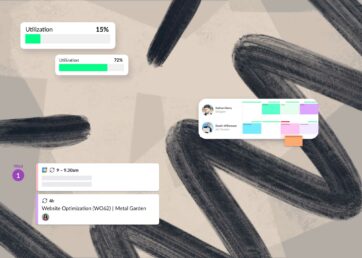A new “virus” is going around, and it’s highly contagious. “Quitagion,” as the New York Times recently termed it, persuades employees to quit their jobs because they see co-workers making a choice to live better—higher pay, nicer benefits, a sense of workplace belonging, and work-life balance.
The good news is that as an employer and a project manager, you can ‘vaccinate’ your company against Quitagion by using resource management techniques.
Resource management techniques keep your projects on track and give your employees the work-life balance they crave. In fact, if you use resource management techniques skillfully, you’ll achieve project success and not just work-life balance, but work-life harmony.
Resource management leads to higher productivity and balanced workloads
Resource management techniques help you assign employees to projects in ways that empower them to do quality work on time.
When employees are successful at work, they feel energized and confident about tackling the next task. Mental well-being leads to stronger workplace relationships too. Research from Gallup states that employees who have a best friend at work are twice as likely to be engaged at work. This energy from engagement and job satisfaction often spills over into employees’ personal lives, where they have the space for other commitments and pursuits.
The result: Happier employees and thriving businesses.
At Resource Guru, we believe that people do their best work when they are not rushed, so overallocation should be a last resort, not an everyday practice. Employees aren’t machines; they need the time and space to focus, innovate, and enjoy their work. So even though we named ourselves Resource Guru, we have never thought of people as inanimate “resources.” We believe the companies that thrive do so because they deal with people in all their humanness.
As Harvard Business Review points out, “The best teams aren’t more effective because they work all the time.” The best teams do things differently: they have time to connect over non-work topics, offer praise and feedback, and get to know co-workers in a more authentic way.
Resource management techniques can help you plan and gain visibility to keep your teams from working all the time.
In this article 📖
1. Resource forecasting
Resource management typically begins with resource forecasting, where you predict the number of team members and the types of skills you will need for future projects. This helps you determine whether you have all the resources you need or if you need to hire contractors or freelancers.
Without resource forecasting, you’d end up either underutilizing or overbooking employees. For instance, when you start planning new projects, you need to estimate if your team members are available. They may already be fully utilized in their current projects. Others may have a vacation coming up. If you don’t plan ahead and you assume they will be available for future needs, there will be chaos when a new project is set to begin.
Employees and project managers will be stressed out and overworked, scrambling to do more and working longer hours. This costs you more than overtime pay—people are more likely to make mistakes when they are tired and rushed, resulting in poor quality work.
Even if you hire freelancers, you can’t be sure they will be available at short notice or have enough training to produce work that matches your quality standards.
Ultimately, you risk delaying your projects or delivering low-quality work and being faced with unhappy employees and dissatisfied clients—an overall failure of resource management.
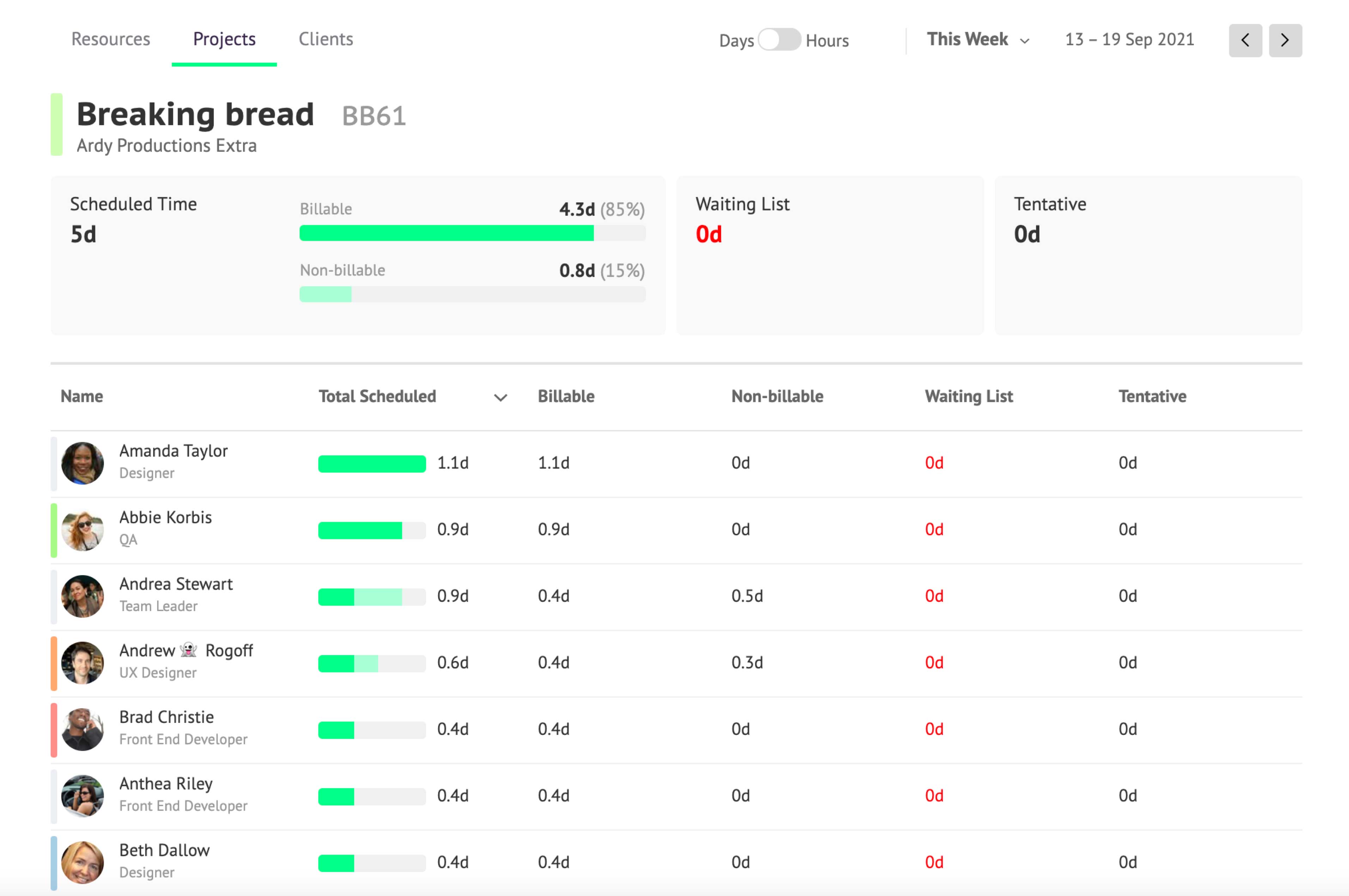
The alternative? Get a head start—ideally, as soon as your sales team confirms new projects—by estimating how many full-time equivalents (those who work 40 hours a week) you have and how much availability they have. You could use a spreadsheet for this; however, we recommend saving time and making your life easier with a tool like Resource Guru that does the calculations for you with project forecasting reports.
2. Resource planning
Resource planning is your key to delivering successful, high-quality projects. 88% of organizations report that resource planning enabled them to achieve project success. Lay a solid foundation for resource planning with the iron triangle—mapping the budget, timeline, and scope of each project.
In essence, resource planning helps you pinpoint the how, when, and who of the project. This could include meeting rooms and equipment. But the most important “resources” remain your employees, who will be driving the projects forward.
To do this, you need to outline your project and break it down into tasks or steps. This is the scope of the project. It will help you determine three factors—the team members and skillsets you need, the cost of the project, and the time you need to complete the project while keeping your team happy and engaged.
But it isn’t as simple as that. You also need to account for vacation, sick days, and contingencies (such as a change in project scope), which can cause shortages and impact your iron triangle.
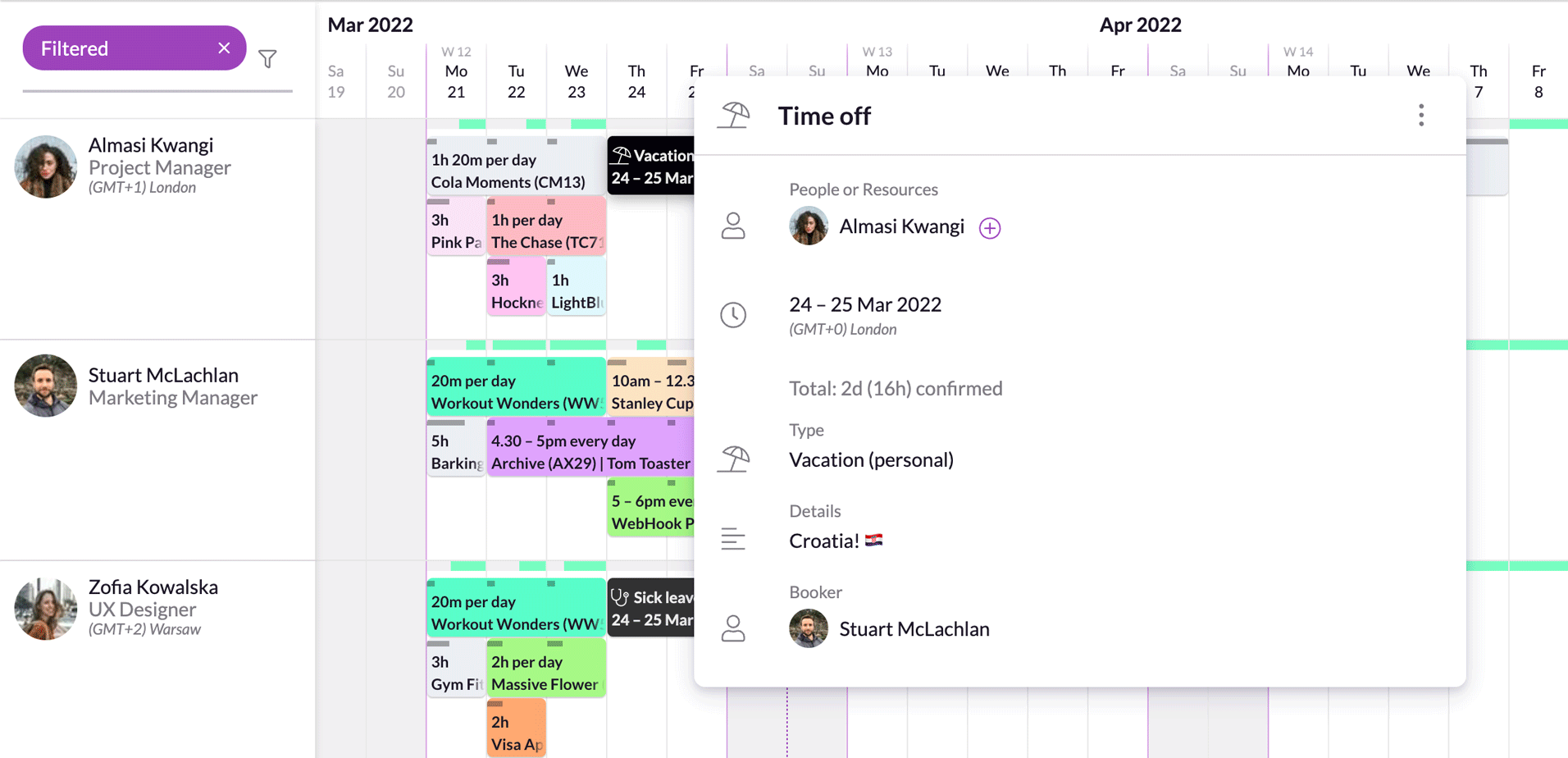
The secret to protecting your resource management plan is how you allocate and schedule employees, which we explain next.
3. Resource allocation
Resource allocation is the process of finding the right team members for the right job in a way that supports project goals and business objectives. But it’s not just about matching skills and tasks.
One of the biggest reasons behind project failure is the overallocation of resources. Resource allocation is fluid—it changes during the project lifecycle. That’s why you need flexibility when you are allocating available resources to projects, especially when working with remote and distributed teams.
For instance, the launch of a new feature during the course of a project might change the scope and mean that you need additional designers to collaborate with the team for just a few days. But if every designer is booked to capacity or isn’t available for the hours you need, your project is in trouble.
So when you allocate your employees to a project, identify the team members you need by matching their skills with project demands, their availability, and other dependencies that affect when a team member is needed or not (like time zones and vacation). In addition, you need to factor in float time–otherwise, the slightest change in any of the factors can wreck your carefully planned resource allocation.
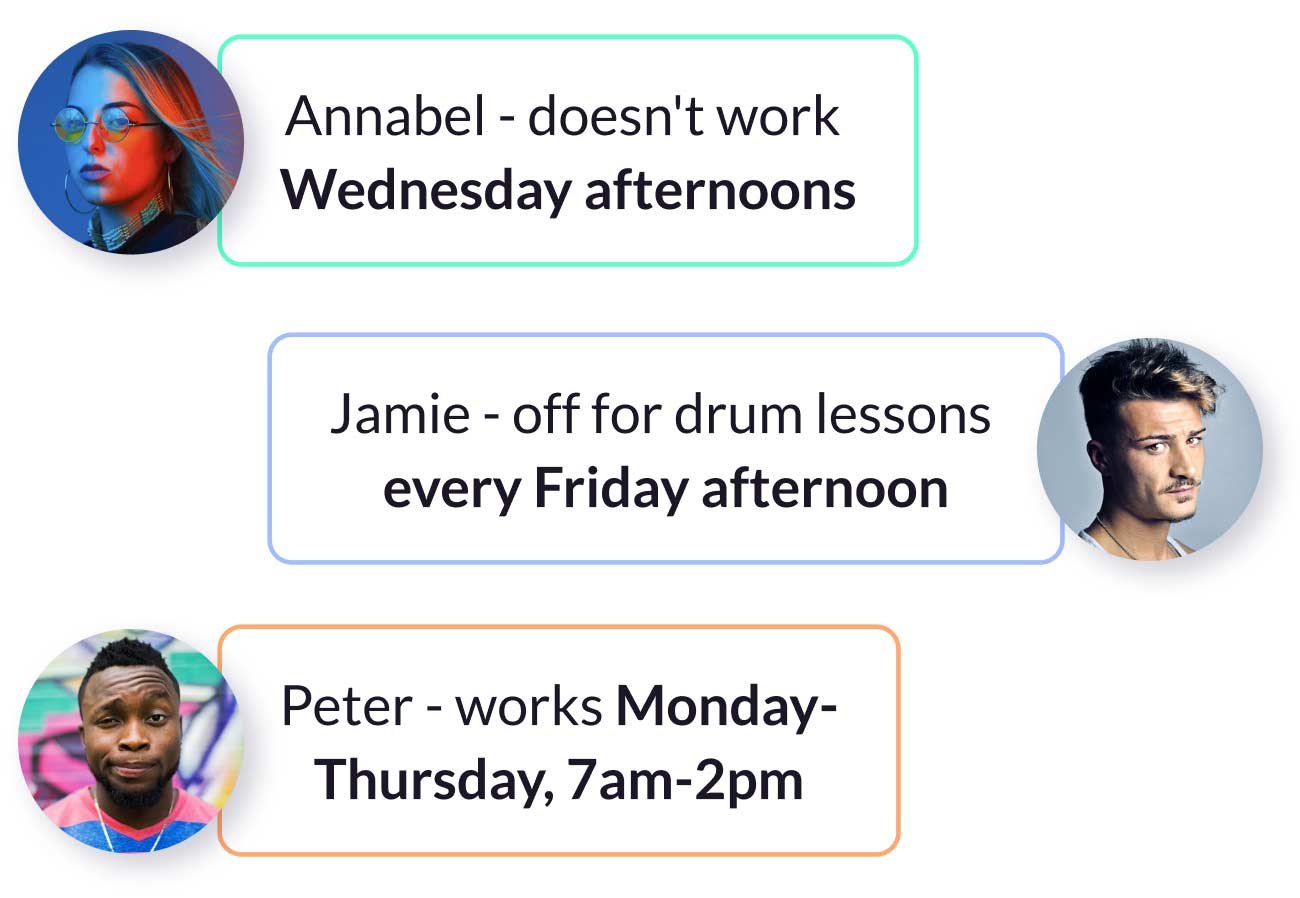
For a very small team, you could plot resource availability on a spreadsheet, but it can be a labor-intensive task for larger teams. This is where a cloud-based resource management tool like Resource Guru comes in. It can give stakeholders a single view with the flexibility you need to tackle changes on the fly.
It can also act as a centralized employee directory—a handy resource when you need to onboard a new employee and give them an overview of the team. Freelancers you’ve worked with in the past can be kept in the system, so you can easily archive and unarchive the people you need for different projects.
4. Resource scheduling
Resource scheduling is the art of assigning your teams exactly when you need them, so your project is covered from start to finish.
Because different teams own different aspects of a project, you need to schedule them at the right time in the right order to prevent bottlenecks. Otherwise, a team member may end up waiting for others to finish their tasks and be “underutilized” until it’s their turn to dive in.
Resource scheduling is pivotal to your project, but doing it all with a spreadsheet has several pitfalls. Manual input is time-consuming, prone to inaccuracies, and doesn’t allow collaboration. Besides, a spreadsheet is not visual, making the user experience difficult.
Most importantly, if you’re trying to be proactive about not overbooking people, a spreadsheet won’t help because you don’t have complete visibility into workloads. Task-based project management tools also don’t tend to account for people’s workloads so your scheduling could go awry.
Resource management software can solve these problems with an easy-to-understand visual guide to your team’s assigned work. You can easily filter employees by departments, skillsets, location, time zones, and even projects, so you can find the right team member with the right skillset and availability.
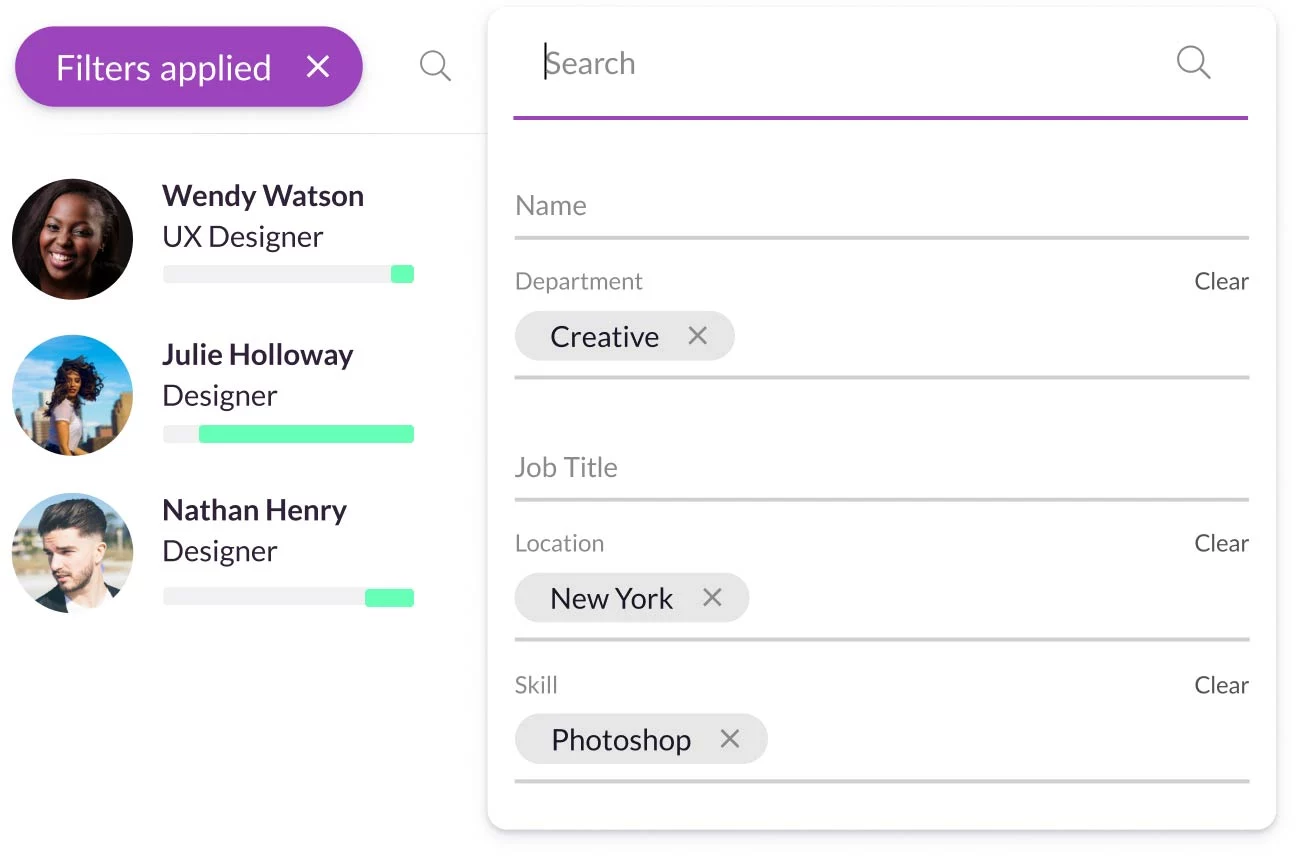
Plus, if you use a tool that has a clash management feature, you’ll get a prompt when you try to assign work to someone who isn’t available.
When this happens in Resource Guru, you can choose whether to continue with the booking by adding it as overtime or add the task to a team member’s waiting list. Items on the waiting list are unconfirmed until you resolve the clash – either by assigning the task to someone else with availability or by reprioritizing other tasks to free up time.
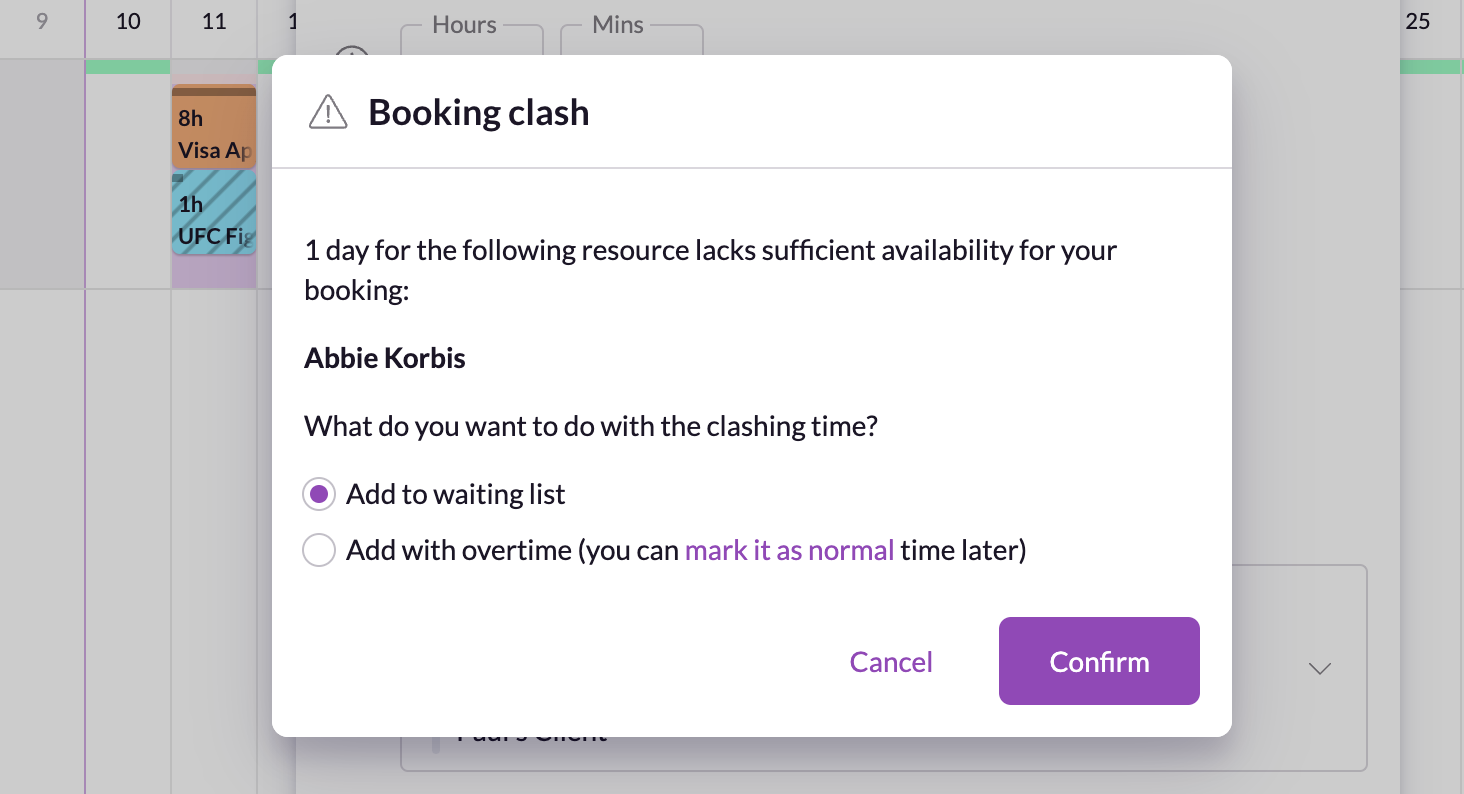
Your view of team availability gets even clearer if you use a resource scheduling tool that offers calendar integrations. At Resource Guru, we believe in being cognizant of both work and personal commitments, which is why we added a two-way sync with Google Calendar.
Most people maintain schedules in more than one place and this integration steps in to give you a single view of all events and bookings, whether they’re scheduled in Resource Guru or Google Calendar. We take privacy seriously, so any events synced from Google Calendar remain private in Resource Guru. The details will be visible to the calendar owner, but only basic information is available to others.
Resource scheduling and optimization become much more manageable when you have a centralized view of team availability.
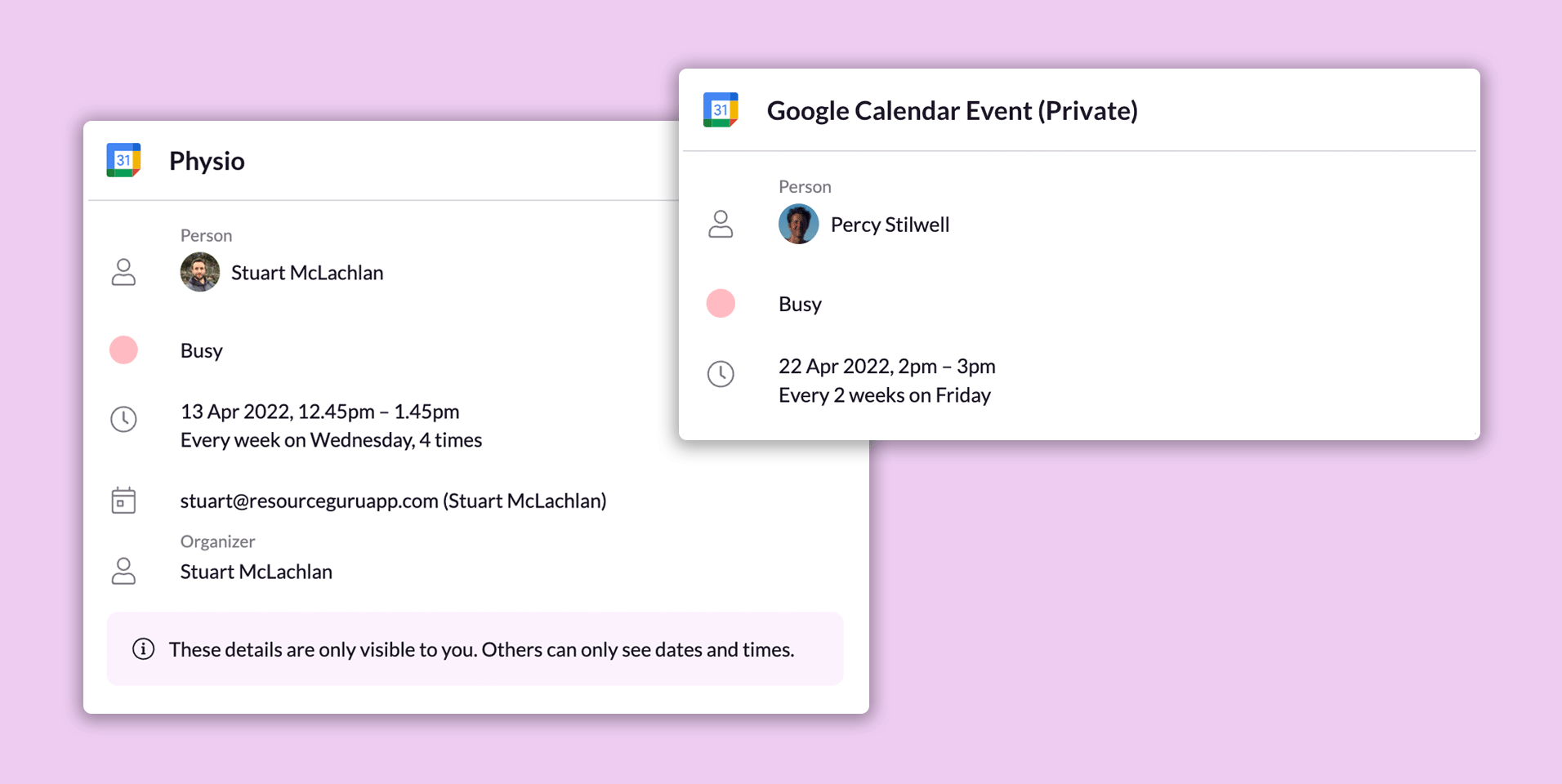
5. Resource leveling
Resource leveling is the process of evaluating workloads to evenly distribute tasks or projects across the team. If you were to think of it visually, imagine a balance scale. You don’t want one side doing the heavy lifting. Similarly, your teams want balanced workloads where no one is overbooked or underutilized. So when you spot overallocation or scheduling conflicts on team calendars, you need to resolve them.
To perform resource leveling, you need to create a baseline project schedule—which is basically a lineup of each task in the project along with their due dates. Then, you check if team members are available for the tasks you laid out. This is especially challenging when the same team members are required across multiple projects.
One way to meet this challenge is to have flexible deadlines, especially if the tasks are dependent on each other because a delay in one could mean a delay in the rest of the tasks. This flexibility is sometimes referred to as “project management float.”
But we recommend going a step further. Your teams don’t just need balanced workloads; they need buffered workloads. So, while resource leveling is a great start, it’s just a first step toward effective resource management.


“Resource Guru is simple to use. It allows us to optimize our resources and keeps an eye on every project.”
6. Resource smoothing
Resource smoothing means leaving buffer time on your employees’ calendars—in other words, not scheduling them for every billable minute. Gartner analyst Robert Handler believes anything over 80% resource utilization makes employees less productive and more prone to making mistakes. And that’s not healthy for your projects or your employees.
Employees who are constantly working or are continually stressed out about deadlines are bound to burn out—at a cost of $120-190 billion a year.
But it’s almost inhuman to think about burnout only as an organizational liability. Yes, burnout hurts organizations, but it damages human beings much more—physically, neurologically, and socially. Burned-out employees are at greater risk of suffering from heart disease and diabetes. Treating burnout with mental health interventions comes at a huge monetary cost to employees. Socially, burnout puts enormous strain on employees’ relationships with their loved ones.
Instead, mindful underutilization offers many benefits: it gives you a realistic picture of project timelines, helps employees relax and produce their best work, and leads to higher job satisfaction. Plus, when projects have unexpected twists and some tasks take longer than you originally anticipated, your teams can use the buffer time to catch up without getting stressed out.
As a result, your projects are in good stead — they stay on track and within deadlines, which leads to happy customers and happy employees.
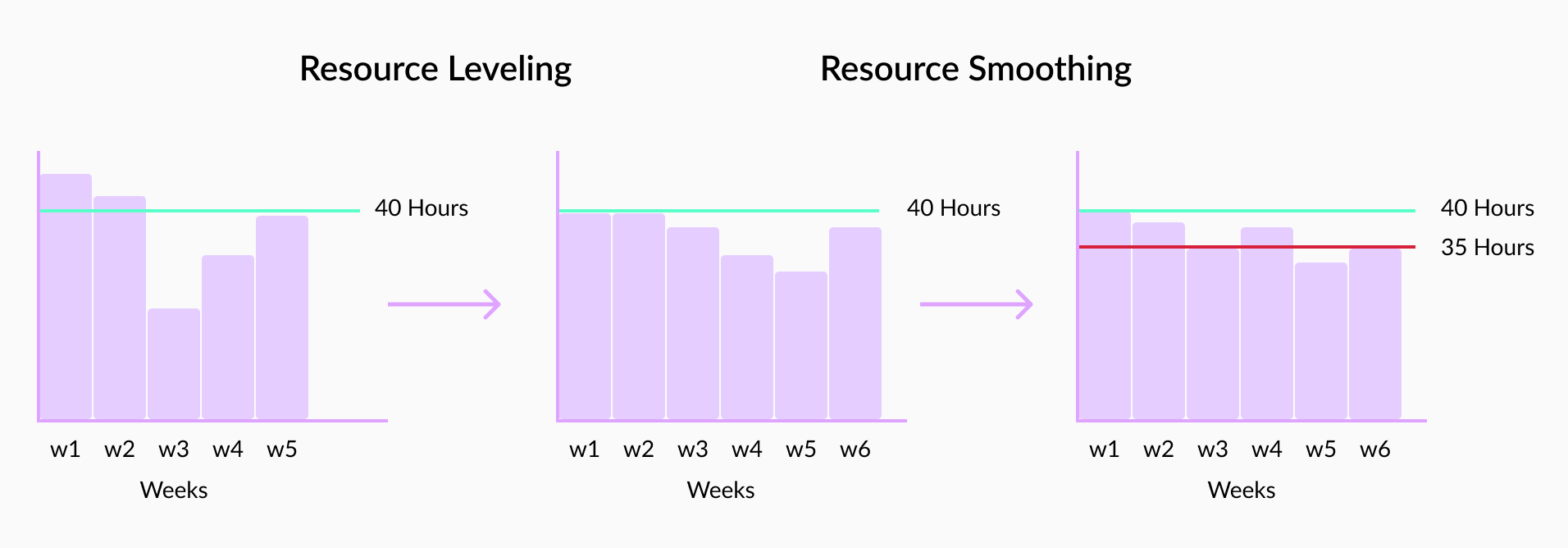
Boost employee retention with resource management techniques
The pandemic opened the floodgates in our minds to new ways of living and working—and it’s all about balance. Employees would rather walk out the door than chase deadlines and accept unwarranted pressure.
Done right, resource management techniques can remedy the situation. Not only do you have happier, more productive employees, but they also stay longer at your organization. As a bonus, your projects are completed on time and on budget, and happy customers keep coming back to work with you.




